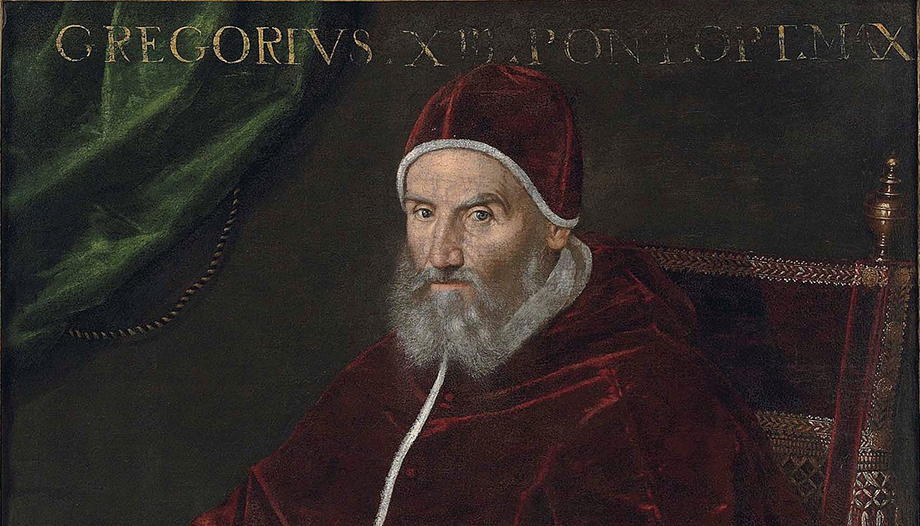Today, February 29, is an exceptional day because it does not exist every year, but neither every 4 years, as many people believe. The most curious thing is that its existence is intimately linked to the Pope whose portrait illustrates this article and to the celebration of Holy Week, whose calculation, moreover, may change starting next year.
The pope in question is Gregory XIII to whom we owe the implementation, in the year 1582, of the calendar that is used today practically all over the world and which, in his honor, is called the "Gregorian calendar". His purpose was to fix the disruption that the passage of time had caused in the less accurate Julian calendar, which had been in use since Julius Caesar promulgated it in 46 BC.
To fix an exact calendar is an arduous task because it is necessary to count in days (rotations of the Earth) the time it takes our planet to go around the Sun and, obviously, these two movements of nature do not have to be coordinated to coincide in whole numbers. Thus, each year does not last 365 days, but 365.2425 days.
The Egyptians (whose calculations were based on Roman mathematicians) knew that the year lasted 365 days and almost a quarter of a day, so the Julian calendar also provided, like ours, every four years, the leap years, but they were not arranged equally. Every four years, it added a day to the 28 days of February, although there was no February 29. What was done was to repeat the sixth day before the calendas (first day of the month) of March, hence the name bi-sixth. In short, the 23rd of February was followed by a 23rd of February bis. This quadrennial correction makes it possible to reduce the error between the calendar year and the calendar year to only 11 minutes. At first it seems a short time, but as it accumulates over the centuries, the minutes become hours, days... Until there was no choice but to correct drastically.
But where did the Pope's interest in fixing an organization that would seem to belong more to the civil sphere come from? Well, from something as important as fixing the celebration of the greatest Christian feast, Easter, which was out of place.
It turns out that at the Council of Nicaea (325) all the Churches agreed that Easter would be celebrated on the Sunday following the full moon (14th of the month of Nisan) after the vernal equinox in the northern hemisphere. That year, the equinox took place on March 21, but, over time, this date had been brought forward by the cumulative effect of which we have already spoken. No more and no less than 10 days different from the date on which Gregory XIII undertook his reform, instead of the 21st, the equinox occurred on March 11.
The reform of Pope Gregory wanted to correct this gap, establishing a new computation that was developed precisely by Spanish scientists, specifically from the University of Salamanca. This algorithm has a minimum error of only one day every 3,323 years and establishes the following: It will be leap year every year multiple of 4 -but not always as almost all of us believe-; multiples of 100 are excepted (that is why the years 1700, 1800 or 1900 were not leap years) although multiples of 400 do keep it (that is why the years 1600 and 2000 were leap years). Thanks to this rule, we still have almost three millennia left without worries.
But now there is another problem: it turns out that, although the Catholic Church certainly solved the discrepancy by adopting the Gregorian calendar, the Eastern Churches did not do so and continued with the old Julian calendar. Therefore, Christians celebrate Easter on two different dates and this is a scandal of disunity that St. Paul VI insisted had to be resolved.
Providentially, next year's calculations will coincide on the same day. Easter 2025, no matter which calendar is used to calculate it, will be on April 20. But it is also the 1,700th anniversary of the Council of Nicaea that fixed the date of Easter. The stars, never better said, seem to align for Christians to take that step of unity that would be to celebrate Easter on the same day. But which day? The ball is now in the court of the Eastern Churches that have to agree, since Pope Francis has expressed his intention to accept octopus as a companion animal.
So, will this 2024 be the last year in which we follow the current calculation of the date of Easter? I believe that we must pray that this will be the case and that we Christians will be able to give a testimony of communion so necessary in a world as divided as ours.
By the way, returning to the subject of the curiosities of the Gregorian calendar, its implementation was the cause of St. Teresa of Jesus died on October 4 and was buried the next day, October 15, 1582. Yes, you read correctly and there is no typo. Nor was it a mistake in the matrix. But I will explain that on her feast day, what the Gregorian calendar has to offer!
Journalist. Graduate in Communication Sciences and Bachelor in Religious Sciences. He works in the Diocesan Delegation of Media in Malaga. His numerous "threads" on Twitter about faith and daily life have a great popularity.











